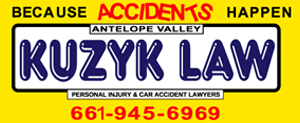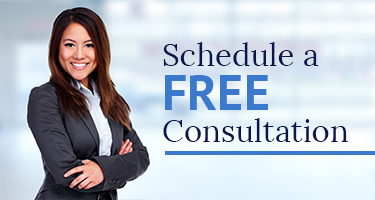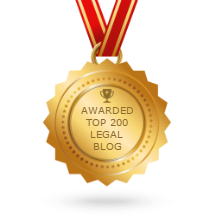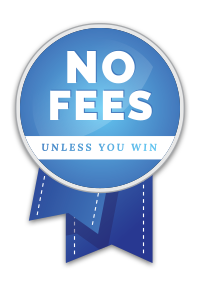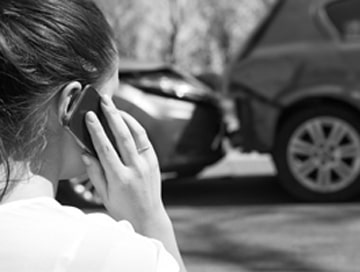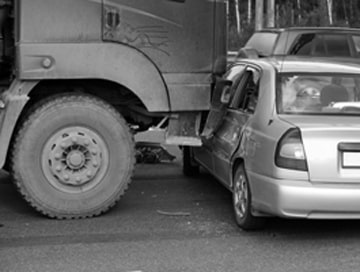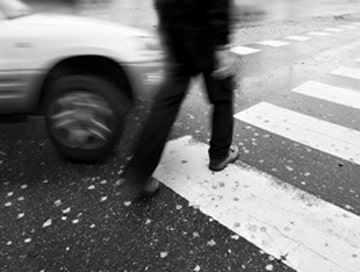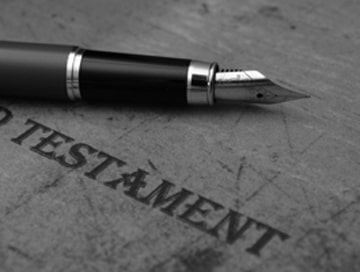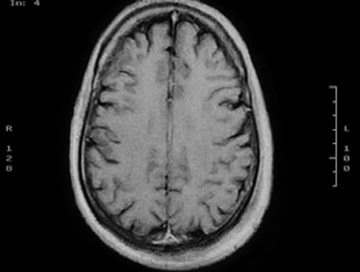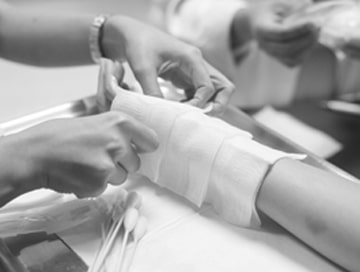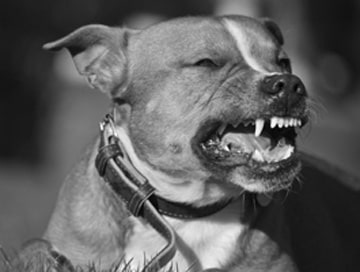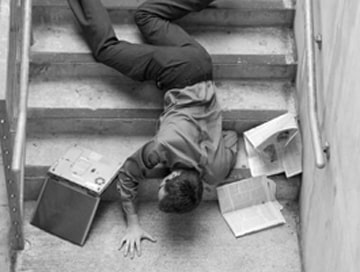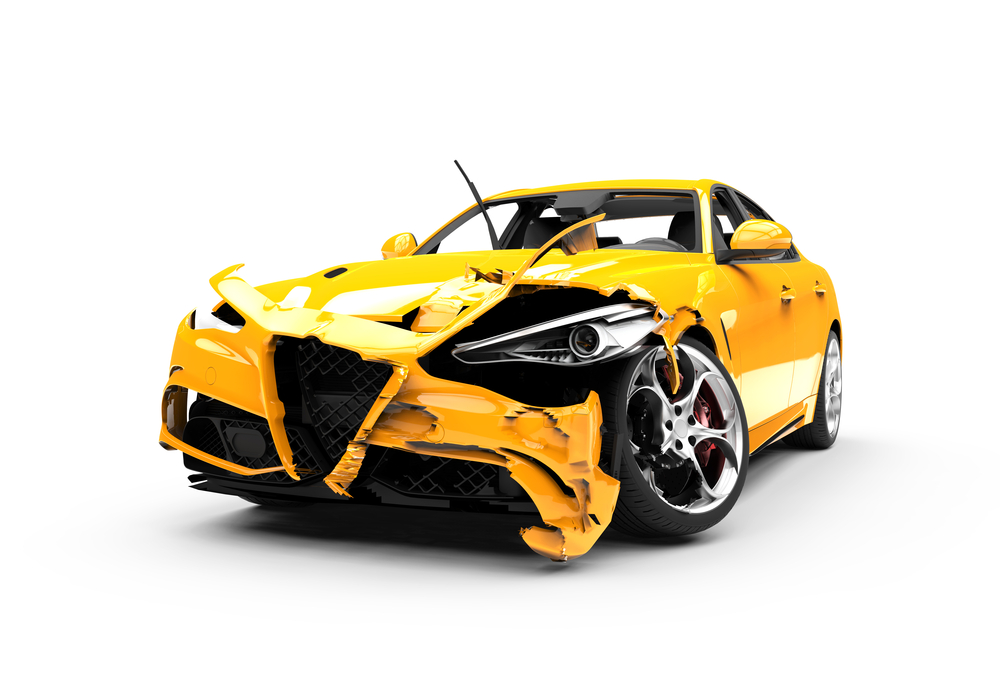
Have you or a loved one had a motor vehicle accident lately? If so, you might be wondering what to do after a car wreck in California. An auto accident can be extremely stressful, and you may not think clearly at the moment. This list will help you decide if you still have action to take. It’s also helpful to share with friends and family, especially young drivers, in case they are ever in a car wreck. Copy this page and keep it in your glove box or billfold for future reference.
If you or a family member have been in an accident and need legal help, Kuzyk Personal Injury & Car Accidents Lawyers is here for you. We are experienced car accident attorneys serving Lancaster and the Antelope Valley, and we can assist with insurance settlements and pursuing damages you are rightfully owed. Call us 24/7 at 661-945-6969, or reach out online to schedule a free consultation.
Don’t Leave the Scene
If you are in a car accident in California or any state of the US, you should remain on the scene and not leave immediately. Leaving the scene of an accident if other parties are hurt or if their property is damaged can constitute hit-and-run driving, which is a crime that carries stiff penalties.
There are other reasons to remain on the scene
You want to stay at the scene for multiple other reasons:
- To make sure other parties such as motorists and their passengers or pedestrians aren’t hurt
- To ensure there has been no property damage to the surrounding area
- To let law enforcement make a preliminary determination of who is at fault
- To check your vehicle for hidden damage
- To get assessed and treated for any injuries or transported to the hospital, as needed
- To exchange information with other parties involved
- To document the accident scene
Even if you have what is commonly known as a “fender bender,” where no one seems to be hurt or where there seems to be no vehicle damage, you should probably call for police assistance. You may discover you have injuries or damage to your vehicle later, and having law enforcement determine who is at fault can help with the insurance settlement. If you are at fault, your insurance company must pay. However, if another party is deemed at fault, their insurance must be responsible.
Never admit you were at fault, even if you are convinced this is the case. Your judgment could be cloudy, or there could be something about the accident you don’t know yet. Keep any conversations with law enforcement to just the basic facts and details.
Only leave the scene if police or 911 operators tell you to do so and self-report the accident. You still want to file a police report because of the fault determination and insurance concerns mentioned above.
California requires minimum auto liability insurance
This is a good time to remind you that minimum liability coverage, or the equivalent, is required by the state to register and operate a motor vehicle in California. At the very least, you must have insurance coverage as follows:
- $15,000 for injury/death to one person
- $30,000 for injury/death to more than one person
- $5,000 for damage to property
This is the minimum coverage you must carry, proof of which must be shown if stopped by law enforcement or involved in an accident. You can certainly obtain higher liability protection, which is recommended for young drivers and high-net-worth individuals, as well as collision and comprehensive insurance.
Make Safety Your Top Priority
Stay safe until help arrives
At any accident scene, you want to make your safety and the safety of others your top priority. First, call 911 for assistance so help can be dispatched. Give the 911 operator your name, mobile phone number, location, and a description of the accident. Let them know if you need an ambulance or firefighters to assist with anyone trapped in a vehicle, fire, or leaking hazardous materials like gasoline.
Next, you’ll have to make a decision about whether to stay in place or move your vehicle. This is determined by several factors:
- The location of your vehicle in relation to traffic near you
- If there is a safe place to pull off to the side
- Whether your vehicle is drivable
- If you are physically capable of driving
- If the vehicle is smoking, on fire, leaking gasoline, or presenting another hazard
If you need to get out of speeding traffic and can do so, that’s usually your best course of action. Be careful exiting your vehicle. Use your hazard lights (AKA “flashers”) and any flares or traffic cones you have with you for emergencies to alert other drivers around you.
If you decide to move your vehicle and want to document the accident scene with photographs or video on your mobile device, only do so if it’s safe. Never step into busy traffic or put yourself at risk for this.
Get treated for your injuries
Pay attention to any injuries you received in the accident. Even if you have seemingly minor injuries, like scrapes and bruises, you should consider getting checked out in the ER or at your doctor’s office. You could be in shock, which is the body’s urgent response to physical trauma and stressful events. Signs of shock include:
- Fast shallow breathing or difficulty breathing
- Rapid heartbeat
- Clammy skin
- Extreme paleness or blue lips and extremities
- Feelings of panic and anxiety
- Nausea and/or vomiting
- Enlarged pupils or blurred vision
- Dizziness or fainting (AKA “passing out”)
- Confusion
- Slurred speech
You should be seen by medical professionals immediately if you show signs of shock because it could be indicative of more serious injuries that have yet to be uncovered. Shock can also exacerbate existing medical conditions, such as cardiovascular disease or diabetes.
Other injuries, signs, and symptoms that should prompt a trip to the emergency room besides the signs of shock listed above include:
- Puncture wounds or large cuts and scrapes
- Bruising, especially on the head or torso
- Trauma to the head, face, or teeth
- Headache or neck and back pain
- Obvious broken bones or dislocations
- Inability to walk or use the limbs
- Numbness or tingling
- Pain in the chest or abdomen
Being thrown from the vehicle, hit by an airbag, or in a vehicle that rolled over will usually cause EMTs at the scene to want to transport you by ambulance to the ER, even if you say you feel fine. Always listen to first responders who insist you receive urgent medical care.
It’s not only important to treat your injuries at the moment. Going to the doctor allows you to be fully checked out and your injuries to be documented in case there are insurance issues or lawsuits later. Doctors can also tell you what to watch out for at home, in case hidden injuries surface later, like internal bleeding or traumatic brain injury. You could also have emotional trauma after the fact, for which you might need to be compensated if you were not at fault in the accident.
Assist others at the accident scene
If you are not seriously injured but others are hurt at the scene, you can assist others to the degree you know how. Avoid moving people who are hurt, unless their life is in peril, such as from a burning car.
You are protected as a Good Samaritan if you help other people at an accident, provided you don’t attempt to do something that requires advanced medical training. For instance, moving people out of harm’s way or putting pressure on a bleeding wound with a t-shirt is fine; trying to perform a tracheotomy on someone who is not breathing is beyond the scope of your ability — that could leave you legally liable.
As a safe rule of thumb, you can do anything to help others that’s taught in a workplace or public basic first aid class. In fact, it’s a good idea to take classes in first aid and CPR just in case you ever need that training for an emergency, in a car accident, or at home.
Exchange Information
Swap details with other motorists involved
As mentioned above, you need to exchange information with any other motorists involved in your accident, whether that’s one other car or multiple vehicles. You need to swap:
- Names and contact information
- License plate numbers
- Insurance information
- Driver’s license numbers
Fortunately, this can be done safely via mobile device during this time of physical distancing.
Collect Necessary Documentation
Take photos and talk to witnesses
You are within your rights to photograph or video the accident scene for your own records. Even if you have to move your vehicle out of the path of traffic, you can still record debris in the road, tire tracks, weather, traffic signals, road conditions, and traffic patterns, as they may pertain to the accident.
You may also need to talk to any witnesses at the scene, especially if the other party fled the scene. Law enforcement will do this as well, but you can still obtain their names and contact information.
Take Your Vehicle to the Mechanic
Check for hidden damage
Remember, your vehicle may have damage you can’t see. You could get rear-ended and think it’s just a little bump, but your undercarriage or trunk floor could be cracked or crumpled. Therefore, it’s wise to take your car or truck to your mechanic for a quick once over to make sure everything is okay.
Contact Your Insurance Company and the CA DMV
Report your accident as required by law
After the accident, you should report the accident to your auto insurance company, even if you’re not found to be at fault. Your policy may require this. It should be in your policy documents or on the back of your insurance ID card. Just like with law enforcement, do not say anything about being at fault or your responsibility in the accident. Simply discuss the damages and issues related to any necessary claims.
In California, you are also required to report the accident to the Department of Motor Vehicles (DMV) within 10 days, if the damages are greater than $1,000, or if there was an injury or death. You can print off form SR 1 from the DMV website and mail it in once completed.
Reach Out to a Car Accident Attorney for Help
Get the compensation you deserve
Sadly, things don’t always go smoothly after a car wreck, even if you were not at fault. The other party’s insurance company may try to give you a paltry settlement or may not want to pay at all. Sometimes they try to blame comparative negligence, where you are partially at fault along with the other driver, in order to minimize the amount paid out in the claim.
There are many types of compensation to which you may be entitled, including:
- Reimbursement for emergency transport and ER treatment
- Ongoing medical care
- Disability or rehabilitation
- Lost wages due to missed work time
- Damaged vehicle or personal property
- Emotional trauma
- Pain and suffering
If you’re not getting the settlement you deserve, you may have to go to court to receive it. That’s why many folks like to engage an experienced Bakersfield personal injury attorney, like Kuzyk Personal Injury & Car Accidents Lawyers, to get the compensation they need.
Our law firm has the expertise and resources to pursue documentation, gather medical and police records, and negotiate with insurance companies. We can even represent you in court if it comes to that.You may feel overwhelmed and pressed for time if you’re trying to work and settle your car accident claim. Let us take that off your plate so you can get your life back to normal. There is a statute of limitations, so you don’t want to wait until it’s too late. Call Kuzyk Personal Injury & Car Accidents Lawyers today at 661-945-6969 for help in Lancaster or the Antelope Valley. We’re here 24/7 to answer your call. Or get in touch online to schedule your free consultation as soon as possible.
